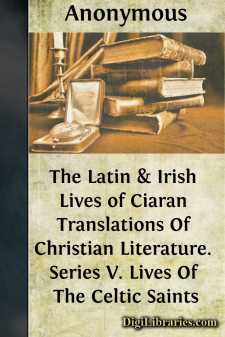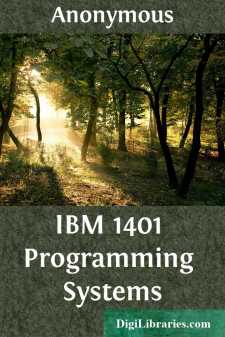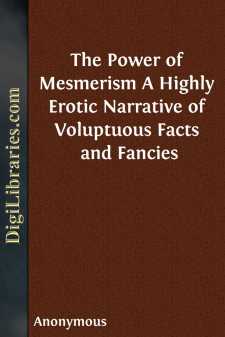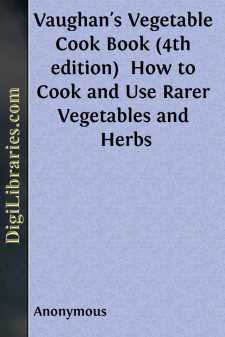Categories
- Antiques & Collectibles 13
- Architecture 36
- Art 48
- Bibles 22
- Biography & Autobiography 813
- Body, Mind & Spirit 142
- Business & Economics 28
- Children's Books 17
- Children's Fiction 14
- Computers 4
- Cooking 94
- Crafts & Hobbies 4
- Drama 346
- Education 46
- Family & Relationships 57
- Fiction 11829
- Games 19
- Gardening 17
- Health & Fitness 34
- History 1377
- House & Home 1
- Humor 147
- Juvenile Fiction 1873
- Juvenile Nonfiction 202
- Language Arts & Disciplines 88
- Law 16
- Literary Collections 686
- Literary Criticism 179
- Mathematics 13
- Medical 41
- Music 40
- Nature 179
- Non-Classifiable 1768
- Performing Arts 7
- Periodicals 1453
- Philosophy 64
- Photography 2
- Poetry 896
- Political Science 203
- Psychology 42
- Reference 154
- Religion 513
- Science 126
- Self-Help 84
- Social Science 81
- Sports & Recreation 34
- Study Aids 3
- Technology & Engineering 59
- Transportation 23
- Travel 463
- True Crime 29
The Latin & Irish Lives of Ciaran Translations Of Christian Literature. Series V. Lives Of The Celtic Saints
by: Anonymous
Categories:
Description:
Excerpt
INTRODUCTION
Of all the saints of Ireland, whose names are recorded in the native Martyrologies, probably there were none who made so deep an impression upon the minds of their fellow-countrymen as did Ciaran of Clonmacnois. He stands, perhaps, second only to Brigit of Kildare in this respect; for Patrick was a foreigner, and Colum Cille accomplished his work and exercised his influence outside the shores of Ireland.
Doubtless much of the importance of Ciaran is reflected back from the outstanding importance of his great foundation—the monastic university, as it is fair to call it, of Cluain maccu Nois (in an English setting spelt "Clonmacnois"), on the shore of the Shannon. But this cannot be the whole explanation of the esteem in which he was held; it must be at least partly due to the memory of his own character and personality.
Such a conclusion is indicated if we examine critically the Lives of this saint, translations of which are given in the present volume, and compare them with the lives of other Irish saints. In studying all these documents we[page 2] must bear in mind that none of them are, in any modern sense of the word, biographies. A biography, in the proper definition of the term, gives an ordered account of the life of its subject, with dates, and endeavours to trace the influences which shaped his character and his career, and the manner in which he himself influenced his surroundings. The so-called lives of saints are properly to be regarded as homilies. They were composed to be read to assemblies of the Faithful, as sermons for the festivals of the saints with whom they deal; and their purpose was to edify the hearers by presenting catalogues of the virtues of their subjects, and, especially, of their thaumaturgic powers. Thus they do not possess the unity of ordered and well-designed biographies; they consist of disconnected anecdotes, describing how this event or that gave occasion for a miraculous display.
It follows that to the historian in search of unvarnished records of actual fact these documents are useless, without most drastic criticism. They were compiled long after the time of their subjects, from tales, doubtless at first, and probably for a considerable time, transmitted by oral tradition. It would be natural that there should be much cross-borrowing, tales told about one saint being adapted to others as well, until they became stock incidents. It would also be nothing more than natural that many elements in the Lives should be survivals from more ancient mythologies, having their roots in pre-Christian beliefs. Nevertheless, none of these writings are devoid of value as pictures of life and manners; and even in descriptions of incredible and pointless miracles precious scraps of folk-lore are often embedded. In most, if not in all, cases, the incidents recorded in the Lives are to be criticised as genuine traditions, whatever their literal historicity may be;[page 3] few, if any, are conscious inventions or impostures.
In the Lives of Ciaran there are many conventional incidents of this kind, which reappear in the lives of other saints. In the Annotations in the present edition a few such parallels are quoted; though no attempt is made to give an exhaustive list, the compilation of which would occupy more time and space than its scientific value would warrant....












